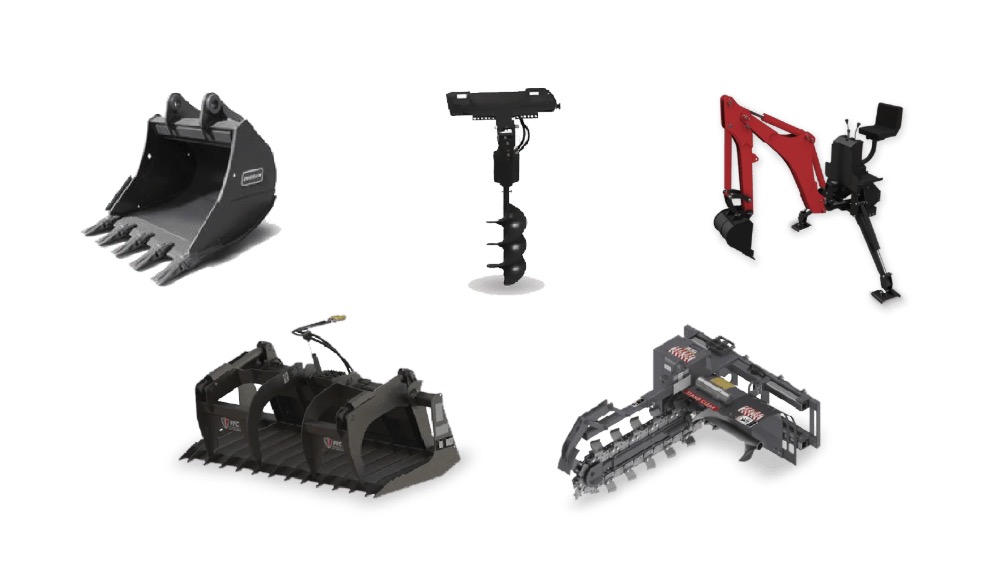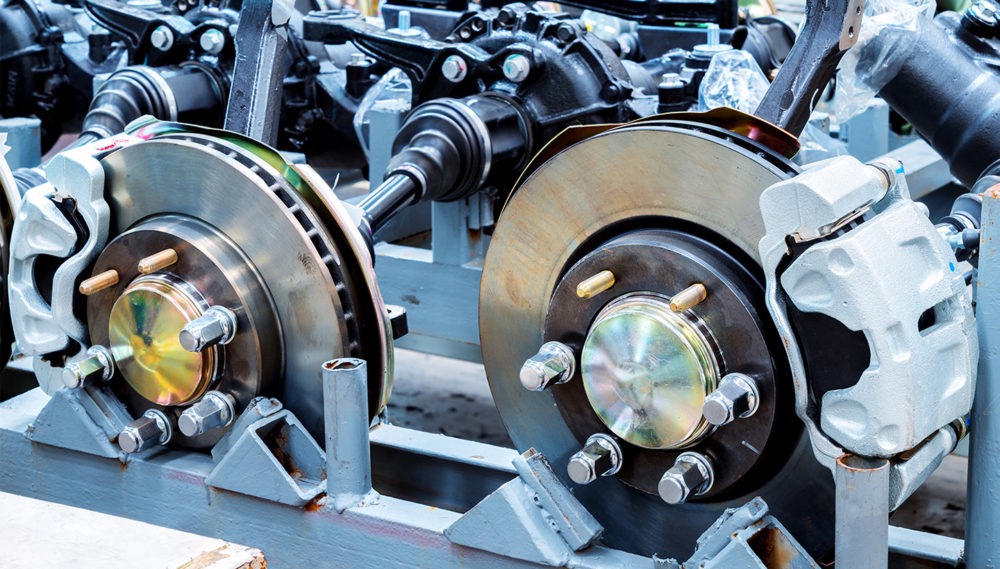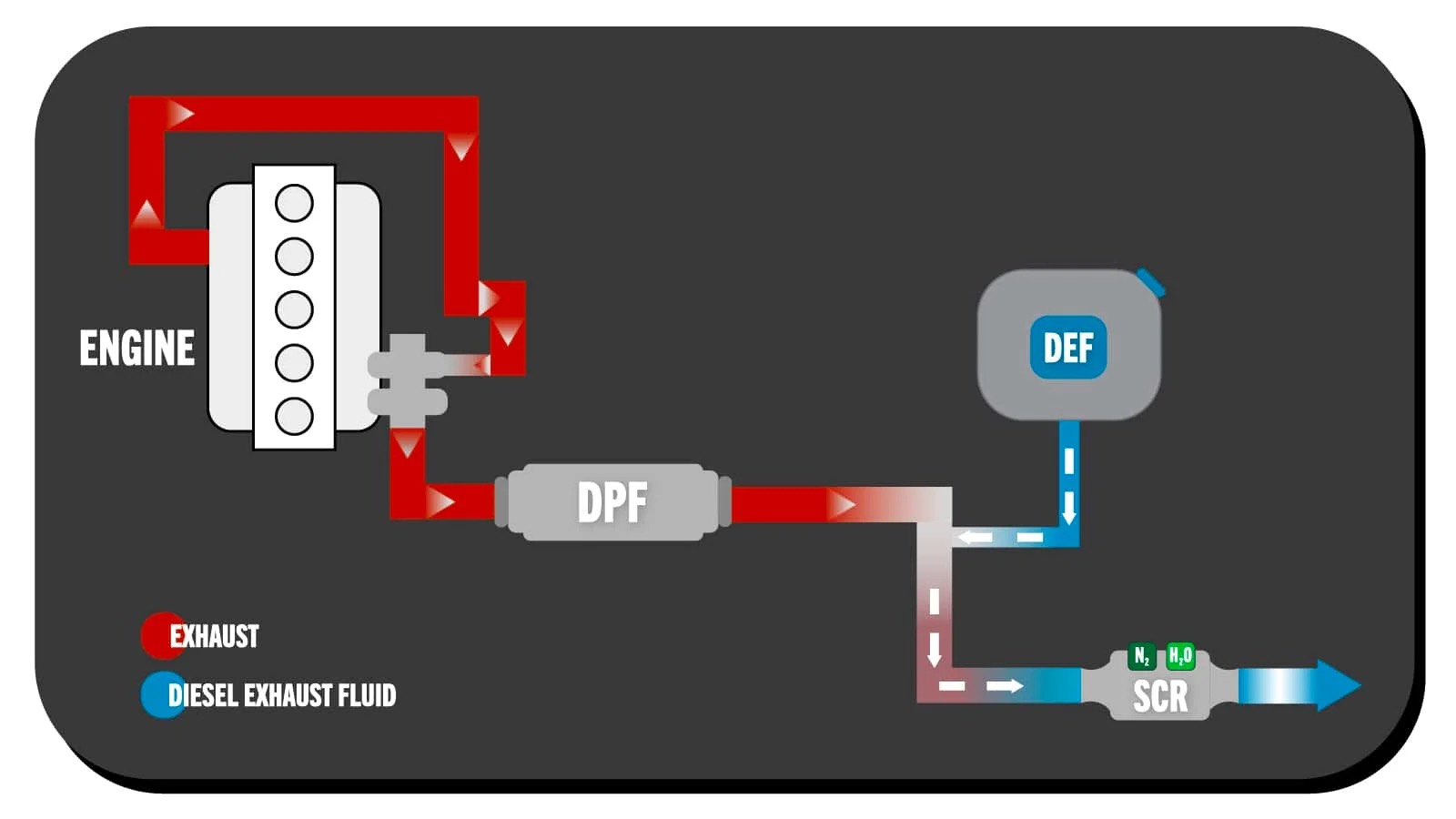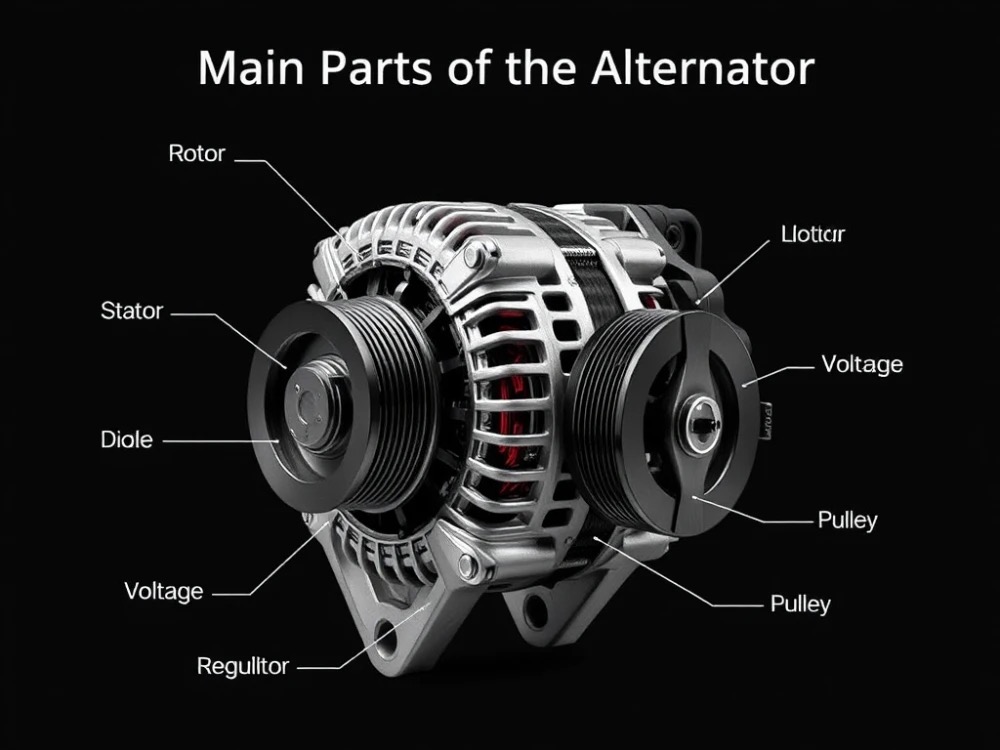
— November 10, 2025
From construction to agriculture, compact track loaders are among the most useful and popular types of heavy equipment on the market today. Their compact design makes them highly maneuverable and they can be used with a wide variety of attachments.
Compact track loaders are similar to skid steer loaders, however, they run on rubber tracks instead of wheels. This feature makes them better suited for certain applications than their wheeled counterparts, especially for working on soft or sensitive terrain.
Here, we go into the differences between compact track loaders and wheeled skid steers, the major advantages of using a compact track loader and everything you need to know to select the right compact track loader for your application.
The main difference between a compact track loader and a wheeled skid steer is that compact track loaders are mounted on rubber tracks, whereas traditional skid steers are mounted on four wheels. The tracks enable a compact track loader to work on sensitive terrain, such as grass, without damaging the work surface.
In general, compact track loaders and wheeled skid steers share many of the same features. Both machines have a compact footprint and a tight turning radius, making them great machines for landscaping, medium construction projects and road repair.
Both compact track loaders and wheeled skid steers can be fitted with a number of attachments which augment their capabilities and allow them to perform complex tasks such as drilling, trenching and demolition work.
That being said, there are some key differences between the two machines that you should keep in mind when choosing one for your project.
Here are the main reasons you may want to consider using a compact track loader over a wheeled skid steer:
Since a compact track loader is mounted on tracks and not tires, the machine’s weight is distributed over a greater surface area. As a result, compact track loaders exert lower ground pressure and are much gentler on work surfaces than wheeled skid steers. This makes them the ideal choice for work on soft or sensitive surfaces that may easily become damaged by wheeled machines.
While its tracks are much better for working on soft surfaces like sand, soil, dirt, gravel or grass, a compact track loader’s increased tractional power may actually damage hard surfaces like asphalt or pavement. Therefore, compact track loaders should be used primarily for working on soft surfaces, while wheeled skid steers are a better choice for hard surfaces.
Compact track loaders are more powerful than wheeled skid steers. In particular, they can lift heavier loads and excel at tasks where high traction is essential, such as dozing.
Due to their design, compact track loaders actually have a lower center of gravity than wheeled skid steers. This lower center of gravity makes them more stable and capable of lifting heavier loads overhead.
While wheeled machines may struggle in challenging conditions, like mud or snow, compact track loaders have better float and can handle even the most challenging terrain.
As a rule, compact track loaders are less prone to slipping and sliding, even on sloped terrain or in sandy soil. Unlike wheeled machines, a compact track loader’s tracks will seldom dig in or become stuck. In this regard, they’re more reliable than wheeled skid steers.
When it comes to maintenance, compact track loaders tend to require more attention than wheeled equipment. Caring for a compact track loader’s undercarriage is more complex than maintaining conventional tires, and a thorough preventative maintenance program is necessary to avoid costly repairs and downtime.
Here are some key maintenance areas that will form the basis of your compact track loader preventative maintenance program:
In the service manual, you will find maintenance intervals for each of your machine’s essential maintenance tasks. The service manual is an invaluable resource that can help guide you as you craft a preventative maintenance plan for your compact track loader.

Top Row, left to right: Bucket, Auger, and Backhoe. Bottom Row, left to right: Grappler and Trencher.
A major advantage of compact track loaders is their versatility. Attachments can augment the capabilities of your compact track loader and help you complete your projects efficiently and on time.
Here are some of the most popular attachments used with track loaders:
Bucket attachments are the most popular attachment used with track loaders. They’re great for transporting loosely compacted materials, like soil or debris. Buckets come in several varieties, and you can find buckets for a wide range of applications.
Augers are specialized digging attachments made for digging deep, narrow holes. They’re commonly used for installing fence posts, street lights and signs.
Backhoes are the ideal attachment for excavating and digging. Unlike a simple bucket, which faces forward, the bucket of a backhoe attachment faces the machine and scoops dirt toward the chassis. Their efficient design makes them a popular choice for landscaping projects.
Trenchers are attachments specialized for digging long, narrow trenches. Their sharp teeth allow them to cut through compact and rocky terrain with ease. They’re considered an essential tool for plumbing, laying utility conduit and irrigation work.
While buckets are great for moving loosely compacted materials, like sand or soil, they’re not great for gripping bulky objects. Grapples have an alligator jaw design with two claws that operate in a gripping motion. They’re great for grabbing and moving utility poles, logs, trees and other awkward objects that don’t fit easily in a bucket.
Before choosing the right compact track loader for your fleet, you’ll first want to consider how you plan on using the machine.
For example, larger track loaders are more powerful, but they’re not as maneuverable as their smaller counterparts. If you need the additional power for large-scale excavation projects, then it makes sense to opt for a large track loader. If, on the other hand, you plan on using your machine for residential landscaping projects, you may opt for a lighter, more compact model.
In addition to size, here are some other points to consider when selecting a compact track loader:
Are you thinking about using a compact track loader on your next project? At MechLink, our team of dedicated heavy equipment pros can help you figure out your next steps. You can check out our selection of compact track loaders available for rent or purchase through our online portal.
If you’re looking for compact track loader parts, then be sure to check out MechLink’s Online Parts Store. We carry OEM and aftermarket parts for compact track loaders from popular brands like Kubota, Takeuchi, Bobcat and more. Can’t find what you’re looking for? Reach out to one of our parts experts for personalized assistance.

Heavy equipment tire wear and what it can reveal about your machine
December 25, 2025

Heavy equipment brake systems: why regular inspections are crucial
December 25, 2025

The role of diesel exhaust systems in construction equipment (with maintenance tips)
December 24, 2025

The crucial role of alternators in heavy equipment
December 24, 2025